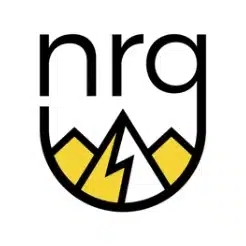Scope of practice statement is a legal document that describes the conditions under which a particular health care professional may legally treat patients. The purpose of the scope of practice statement is to inform other doctors and other health care professionals who are treating the patient.
By comparison, a “scope of practice” statement is similar to a “medical license” in that it outlines the specific conditions under which a medical practitioner can legally provide treatment. Scope of practice statements vary from jurisdiction to jurisdiction, and they are constantly changing. Therefore, every health care professional needs to know exactly what they can and cannot practice within their chosen profession.
Thus, it is vital for any health care professional to know the current scope of practice for physiotherapists in their own province.
What is a physiotherapist?
A physiotherapist is someone who has completed a university degree in physiotherapy and then passed a national registration examination.
Obviously, there are many different degrees available from a variety of universities all over the world. However, in most countries, the requirements for a degree in physiotherapy are similar.
For example, in Canada, the requirements include an undergraduate degree complete with pre-requisites and a master’s degree in physiotherapy from an accredited institution. Completion of a prescribed number of supervised clinical hours. Passing a national registration exam in addition to this, in some provinces, are further requirements such as holding a license to practice medicine or having completed a specialty residency. Once the supervised clinical training is completed, the newly minted physiotherapist must apply for registration with their provincial regulatory body.
Physiotherapists are trained in the same medical schools as medical doctors, and they must also complete the corresponding residency programs. Like medical doctors, they are governed by the licensing authority (College Of Physical Therapists of British Columbia), and they are expected to uphold the same standards of care.
Once all this is done, the newly minted physiotherapist can then use the title “physiotherapist.” They can then legally provide treatment to patients for any conditions outlined in their scope of practice statement.
What is the scope of practice for a physiotherapist?
In most countries, a physiotherapist is now limited to the conditions described in his or her scope of practice statement. Scope of practice statement examples – a physiotherapist may legally treat the following conditions:
- Acute or chronic back pain (pain that occurs as a result of a sudden injury – sports and everyday injuries, degenerative disc disease, herniated discs, spinal stenosis, spondylolisthesis, sprains, strains and other conditions)
- Arthritis (any type)
- Cartilage repair (this is an area where physiotherapists are often over-used)
- Shoulder injuries (cartilage tear, rotator cuff tear, Frozen Shoulder, and more )
- Headaches (especially migraine headaches)
- Knee joint replacement (this is one of the few procedures where a physiotherapist can actually help a patient recover faster and get back to his normal activities sooner than other doctors)
- Neck pain (especially cervical spinal stenosis)
- Osteoporosis (this is one of the most common conditions treated by physiotherapists)
If you have an injury, a physiotherapist can look into it and make sure everything is okay. Then, if needed, they will make recommendations as to what needs to be done to get you back to full health. You can find more about our injury rehabilitation and prevention treatments here.
The Canadian Alliance of Physiotherapy Regulators in Canada (CAPR) is the organization that provides credentialing and assessment services.
Previously, in Canada, the scope of practice for a physiotherapist was very similar to that of a general doctor. That is, a physiotherapist could legally provide treatment for any of the conditions listed in their scope of practice statement. However, things are changing.
CAPR has developed a number of resources that help you improve your comprehension of physiotherapists’ regulatory and professional environment in Canada. The resources offered by CAPR are aimed at assisting new practitioners in understanding how they function as physiotherapists.
The Core Standards must apply and be interpreted in conjunction with federal-provincial-territorial laws, regulatory requirements and guidelines.

What are the benefits of physiotherapy?
The main difference between physiotherapy and other types of health care professionals is that physiotherapists are specifically trained to treat the musculoskeletal system. This means that a physiotherapist will have a much better understanding of your condition and can offer more effective and targeted treatments.
By comparison, through a rigorous education process that includes clinical practice, physiotherapists become experts in the non-surgical treatment of musculoskeletal disorders.
To conclude, here are just a few of the main reasons patients choose to have a physiotherapist:
Cost: Physiotherapists are not as expensive as other treatments. In fact, in some countries, a visit to a physiotherapist costs less than half of what it would cost to see another doctor.
Recovery: Evidence suggests that patients who receive treatment from a physiotherapist recover faster than those who first go to a general doctor.
Results: In contrast, when physiotherapists treat patients with musculoskeletal conditions, the results are much more positive. One study showed that 92% of patients treated by a physiotherapist for back pain achieved complete relief instead of only 53% of those treated by a general doctor.
Unquestionably, this is because GPs are not explicitly trained in the area of musculoskeletal medicine.
How does a physiotherapist choose their scope of practice?
In addition to the information provided in this brief, there are a few other things you should be aware of:
Scope of Practice Statements is written by the province in which the physiotherapist practices. Therefore, every province is going to have a different version of the statement.
You should also know that many provinces have a “generic” scope of practice statement.
Scope of Practice Statements is constantly changing. The most recent statement from British Columbia is available on the CAPR website.
There is a lot more to know about physiotherapy than what we have covered in this brief. You can address joint pains, backaches, and old injuries you have been ignoring due to life and work commitments by booking a physiotherapy appointment and learning more about what we can do.






0 Comments